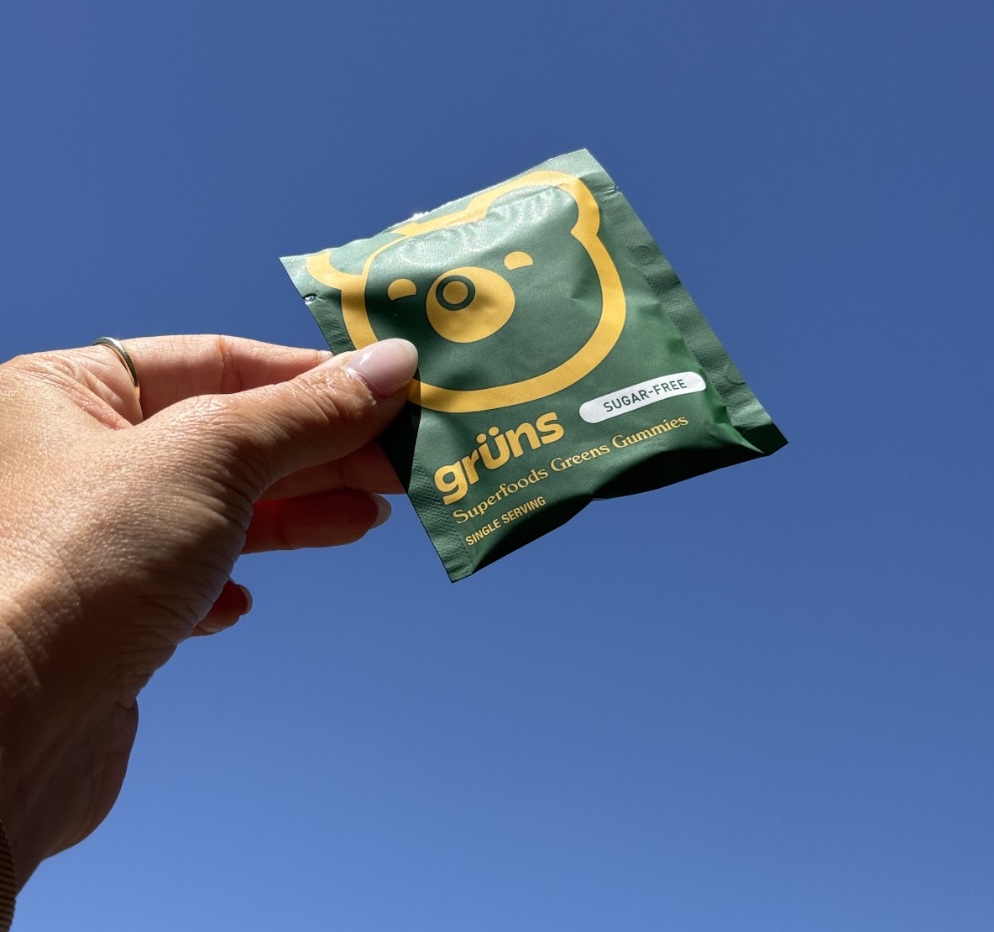We like
We don't like
In partnership with Grüns. Editor’s Note: We only select and work with partners that meet our quality standards, so you can rest assured we only endorse products we believe in.
Picture this: you’re sitting down to dinner and, for the first time in years, your appetite is…gone. A few bites in, you’re full. The plate in front of you looks the same, but your body feels different.
That’s the reality for many people taking GLP-1 medications like Ozempic and Wegovy. Originally designed for type 2 diabetes, these drugs mimic a natural hormone that helps regulate blood sugar, slows gastric emptying, and triggers satiety. Translation? Less hunger, smaller portions – and often, weight loss.
It sounds simple, but here’s the catch: when your appetite shrinks, so does your nutrient intake. And while your cravings may quiet down, your body’s needs don’t.
As an LA-based registered dietitian and content creator, my mission is to make nutrition approachable and evidence based to empower people to feel confident in their food choices. In this piece, I'm breaking down what really happens nutritionally on GLP-1s and how a viral brand is helping bridge those gaps…
The Downside of Eating Less
Reduced appetite can show up in two ways: for some, nausea or constipation make eating difficult; for others, the appetite suppression itself leads to eating far less than needed.
Both scenarios can cause inadequate intake of calories, protein, fiber, and key nutrients – and that comes with health risks.
What Happens When Nutrients Run Low
When calorie intake drops, nutrients often drop with it:
- Protein: inadequate intake can lead to muscle loss, fatigue, and slowed metabolism.
- Fiber: low intake worsens constipation and disrupts gut health.
- Micronutrients: B12, calcium, iron, vitamin D, and magnesium are common shortfalls.
- Phytonutrients: antioxidants and plant compounds that support long term health may be forgotten.
TL;DR Eating less overall shrinks the opportunity to meet your body’s needs.
Why Deliberate Nutrition Matters
GLP-1s naturally limit appetite, so food choices become higher stakes. Every bite counts!
That means fiber becomes a non-negotiable for gut health and nutrient dense produce should be included in meals.
Only 5% of Americans meet the daily fiber recommendation of 25–38 grams per day. With GLP-1s shrinking appetite, there are even fewer opportunities to hit that goal — making fiber an even higher priority.
Fiber plays a key role in gut health, digestion, and regularity. That’s especially relevant since constipation is one of the most commonly reported GLP-1 side effects.
Grüns helps bridge that gap: each serving provides 6 grams of fiber, about 3x more than many greens powders. Soluble fiber forms a gel in the gut that helps keep things moving — making it especially helpful for regularity when constipation is common on GLP-1s.
Choose Supplements Wisely
When appetite is limited, supplements can help fill the gaps – but not all supplements are created equal. Many skip over key nutrients and others aren’t third party tested, so there’s no guarantee what’s on the label is what you’re actually getting. That’s why I encourage my clients to look for products that are tested for purity, made in GMP compliant facilities, and transparent about their ingredients.
Where Grüns Fits In
Grüns checks the important quality boxes – third party tested, GMP compliant, and validated for accuracy – while also targeting the nutrients most likely to fall short on GLP-1s.
And, most importantly, Grüns is clinically tested. In a 12 week study, participants saw measurable increases in key nutrients, including a 20.5% rise in folate and a 40.1% rise in vitamin C. On top of that, every batch is third party tested and GMP-compliant, ensuring what’s on the label is exactly what’s in the gummy.
With over 20 essential vitamins and minerals (including B12, folate, vitamin D, and iron), a pectin base with prebiotics to support digestion, and a blend of greens and superfoods like kale, spirulina, pomegranate, and acai, it aligns closely with the very gaps smaller appetites can create.
On top of that, one of the biggest challenges with supplements is consistency. Powders can be messy, taste chalky, and aren’t easy to work into a daily routine. If something doesn’t fit seamlessly into your lifestyle, it’s harder to stick with – and when it comes to nutrition, consistency is everything.
The brand’s gummy format makes it portable, enjoyable, and actually easy to remember. Instead of dreading a powder or pill, it feels like something you want to take — and that makes a big difference over time.
A Dietitian’s Take
As a Dietitian, I encourage anyone on GLP-1s to think about nutrition as deliberately as they think about their medication. Smaller appetites means smaller opportunities to fuel your body.
Aim to:
- Build every meal with protein and produce
- Make every bite count
- Use supplements to fill in nutritional gaps
The misconception that “less food = fewer needs” is backwards. In reality, less food = more of a need to be intentional!
In Conclusion
GLP-1s can be powerful tools for health, but they aren’t risk free. That’s why nutrition doesn’t become less important – it’s actually far more important. Smaller plates mean higher stakes! Deliberate nutrition ensures your health doesn’t shrink along with your appetite and Grüns makes that process more simple and sustainable.


















